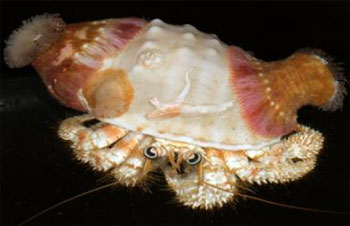100 species discovered in Hawaii
100 species discovered in Hawaii
mongabay.com
October 30, 2006
A three-week scientific expedition to America’s newest marine park, the Northwestern Hawaiian Islands Marine National Monument, may have discovered 100 species of marine creatures including crabs, corals, sea cucumbers, sea quirts, worms, sea stars, snails, and clams. While some of these species are known from other areas, this will be the first time they have been recorded in the French Frigate Shoals of the Northwestern Hawaiian Islands.
The expedition was part of the international Census of Marine Life’s Census of Coral Reef Ecosystems, a program involving more than 1,700 scientists from 73 countries to assess the diversity, distribution and abundance of ocean life and explain how it changes over time.
“It was a very successful expedition by almost any criterion, and the discovery phase has really only just begun. In the coming months, and even over the next several years, we will be conducting morphological examinations and analyzing genetic sequence data in order to further identify and classify these organisms, and possibly to shed some light on where these species originated,” said Dr. Joel W. Martin of the Natural History Museum of Los Angeles County. “What we did not find is also important. There were several groups of animals that we expected to find but did not find, or found only rarely, such as porcellanid crabs. The apparent absence of these common reef organisms may provide insight into how the unique flora and fauna of French Frigate Shoals came to be.”
 Hawaiian Pom-Pom Crab. This crab was collected during a three-week expedition to the Northwestern Hawaiian Island National Monument. Photo by Joel Martin, NHMLAC, NOAA
|
More than 50 different sites were surveyed throughout the atoll using collection meticulous methods to minimize the impact on the marine sanctuary.
“Because our work was conducted within the borders of the world’s largest fully protected marine area, we have been extremely careful to follow protocols that would minimize any disturbance to this ecologically delicate region. It’s hoped that our work will heighten public appreciation and awareness of this unique area and lead to a better understanding of how we manage such large and sensitive marine areas,” explained Martin.
Researchers also took hundreds of photos of the specimens.
“It is not until you start looking through the macro lens at these organisms, and give them time to get settled, that you start to see the vibrant colors, the fine hairs covering a crab’s shell, the flecks of color in the translucent tentacles of an anemone, the incredible evolutionary adaptations for survival,” said photographer Susan Middleton who was onboard the National Oceanic and Atmospheric Administration Ship Oscar Elton Sette which served as the base of the expedition. “It is then that I realize how infinitely complex life is on a coral reef, and how grateful I am to these scientists for helping me to see organisms that have spent millions of years evolving colors, shapes, and behaviors in order not to be seen.”
The researchers hope that the survey will help them better understand the biology and conservation needs of the protected area.
This article used information from a Census of Marine Life news release.








